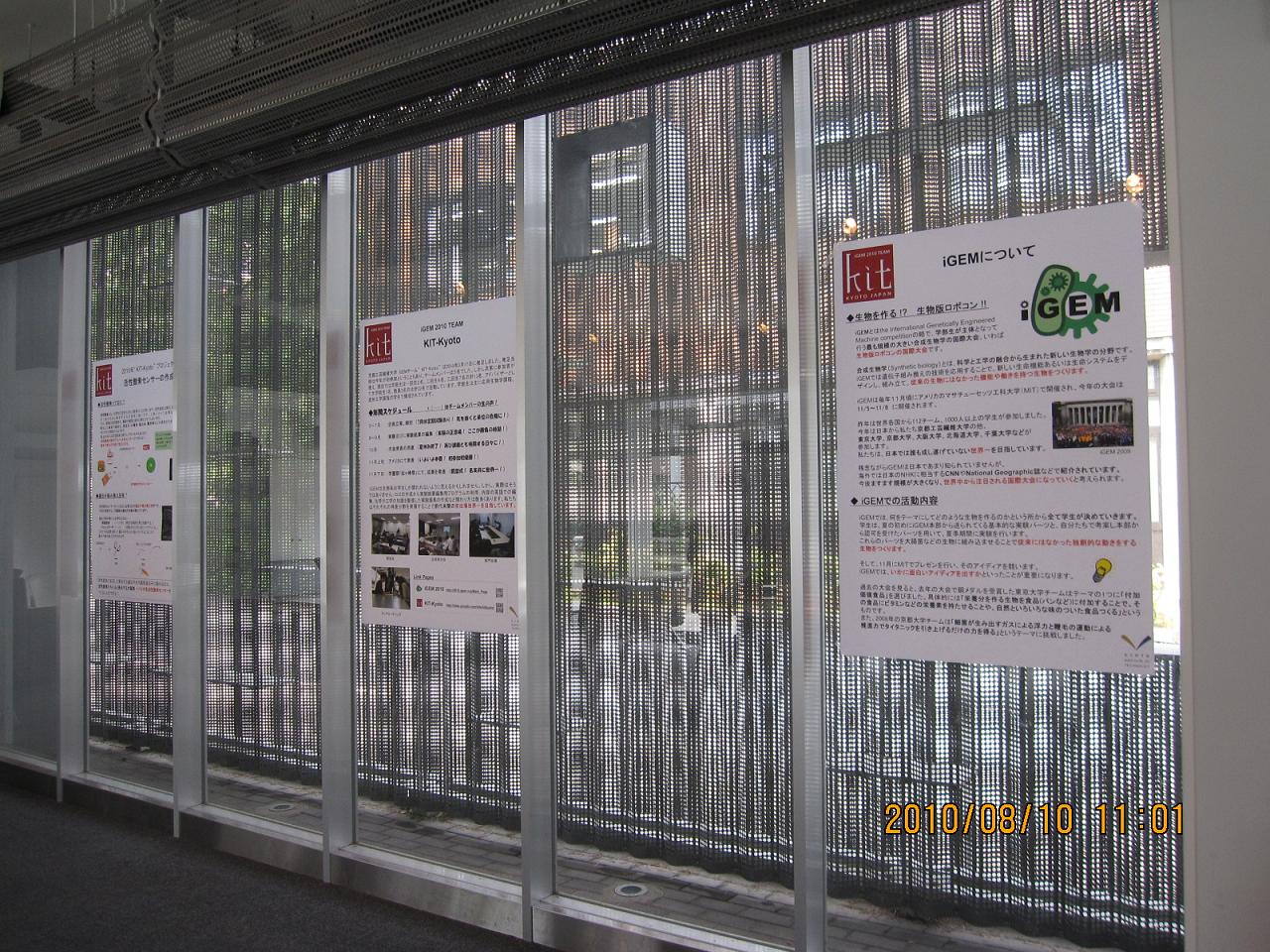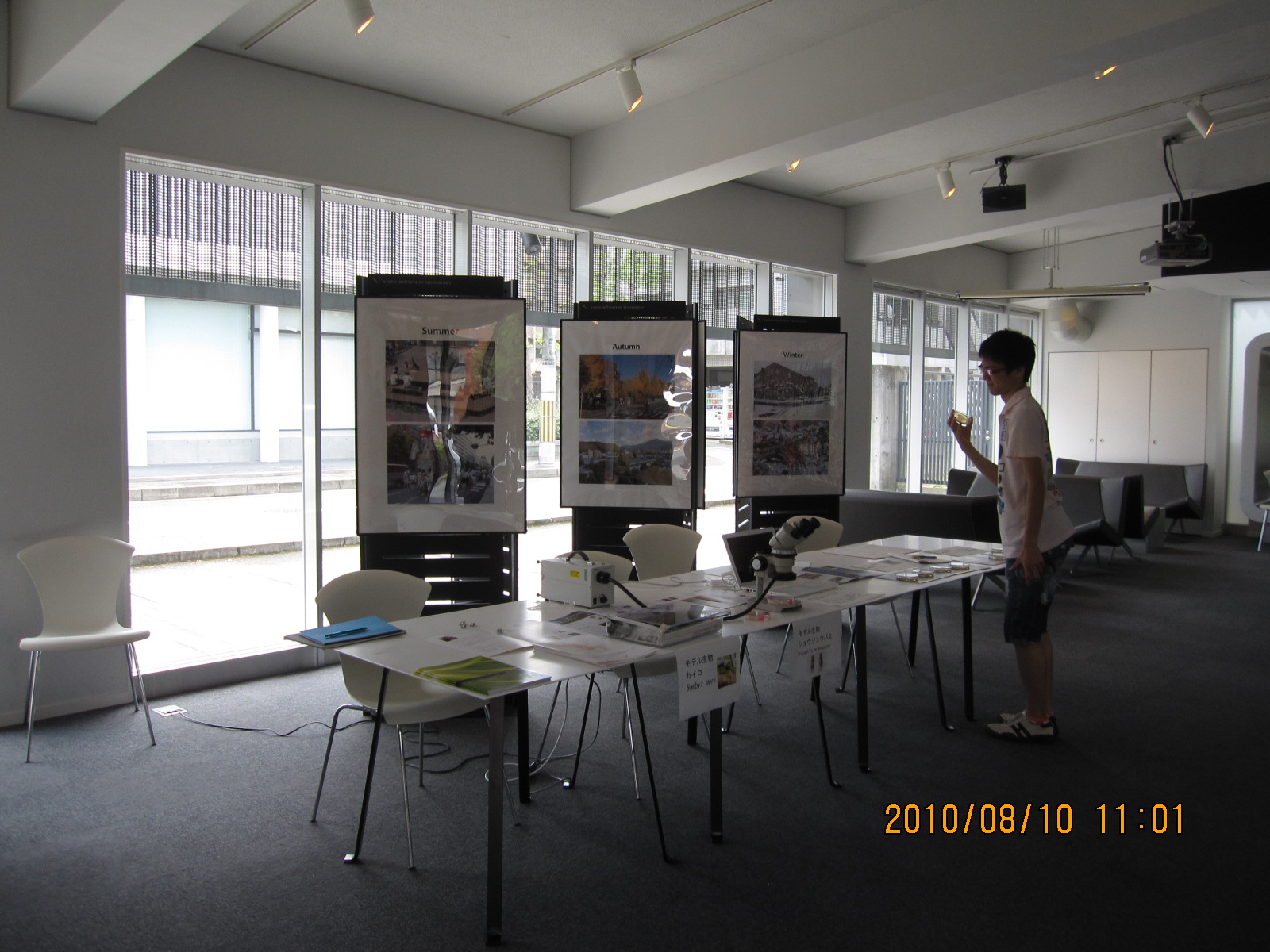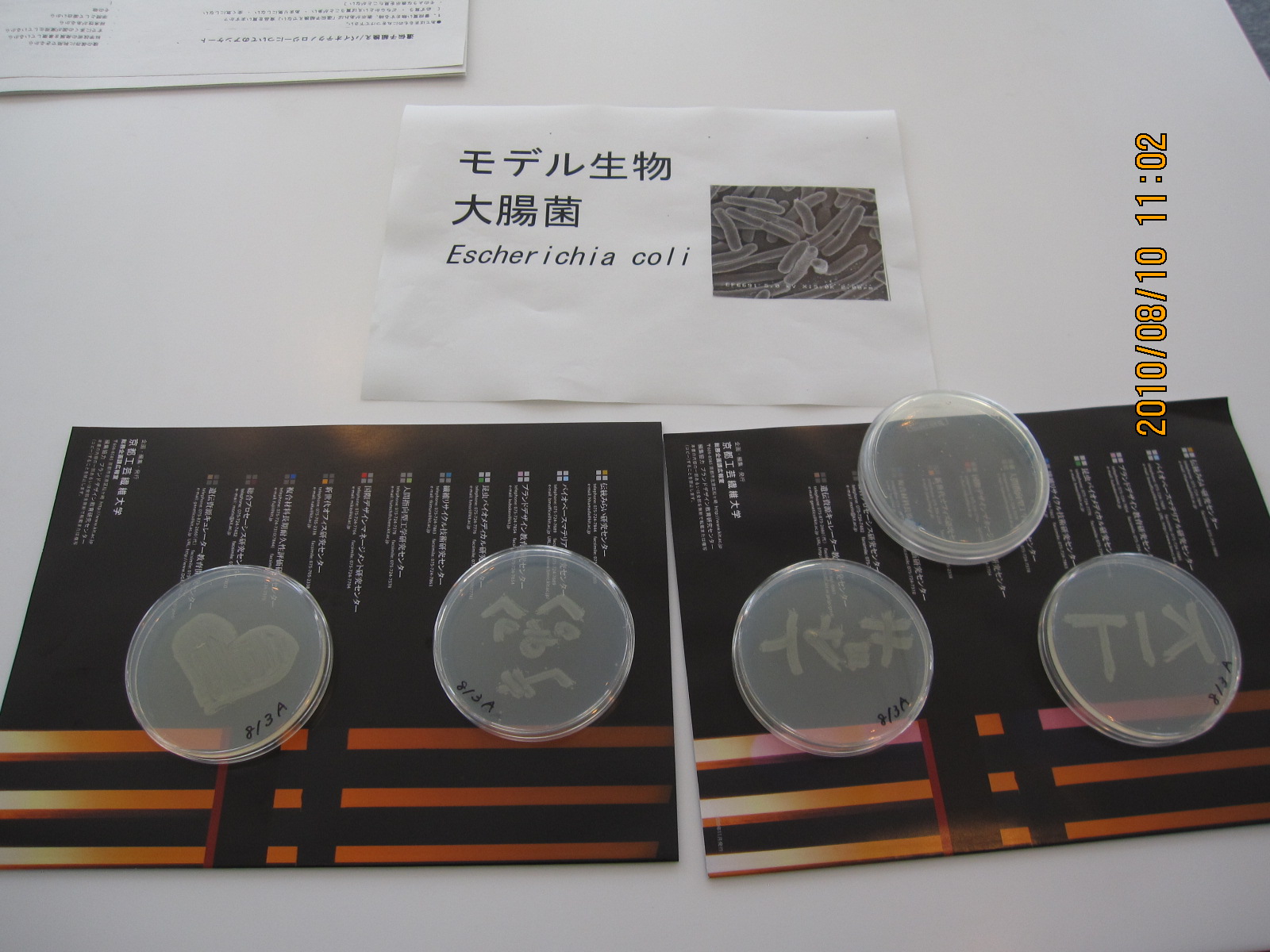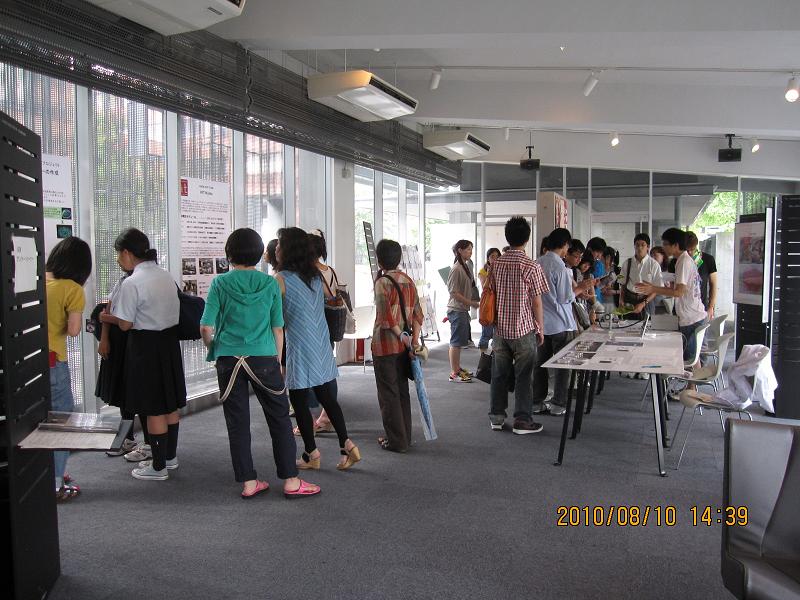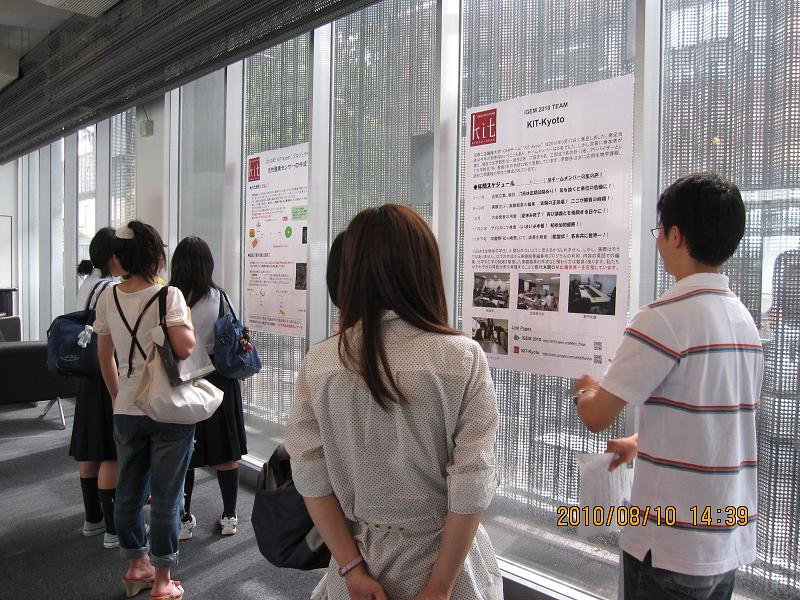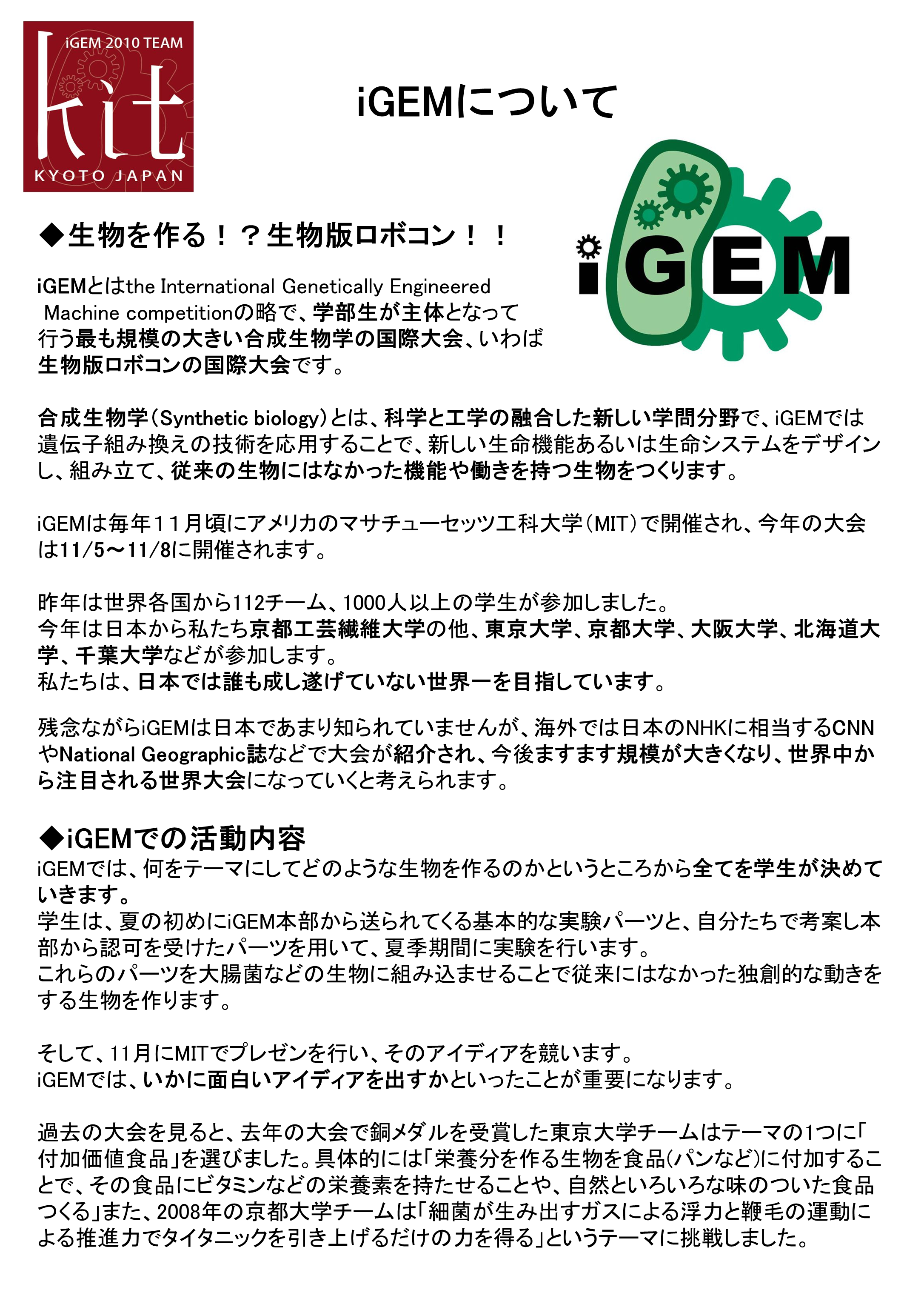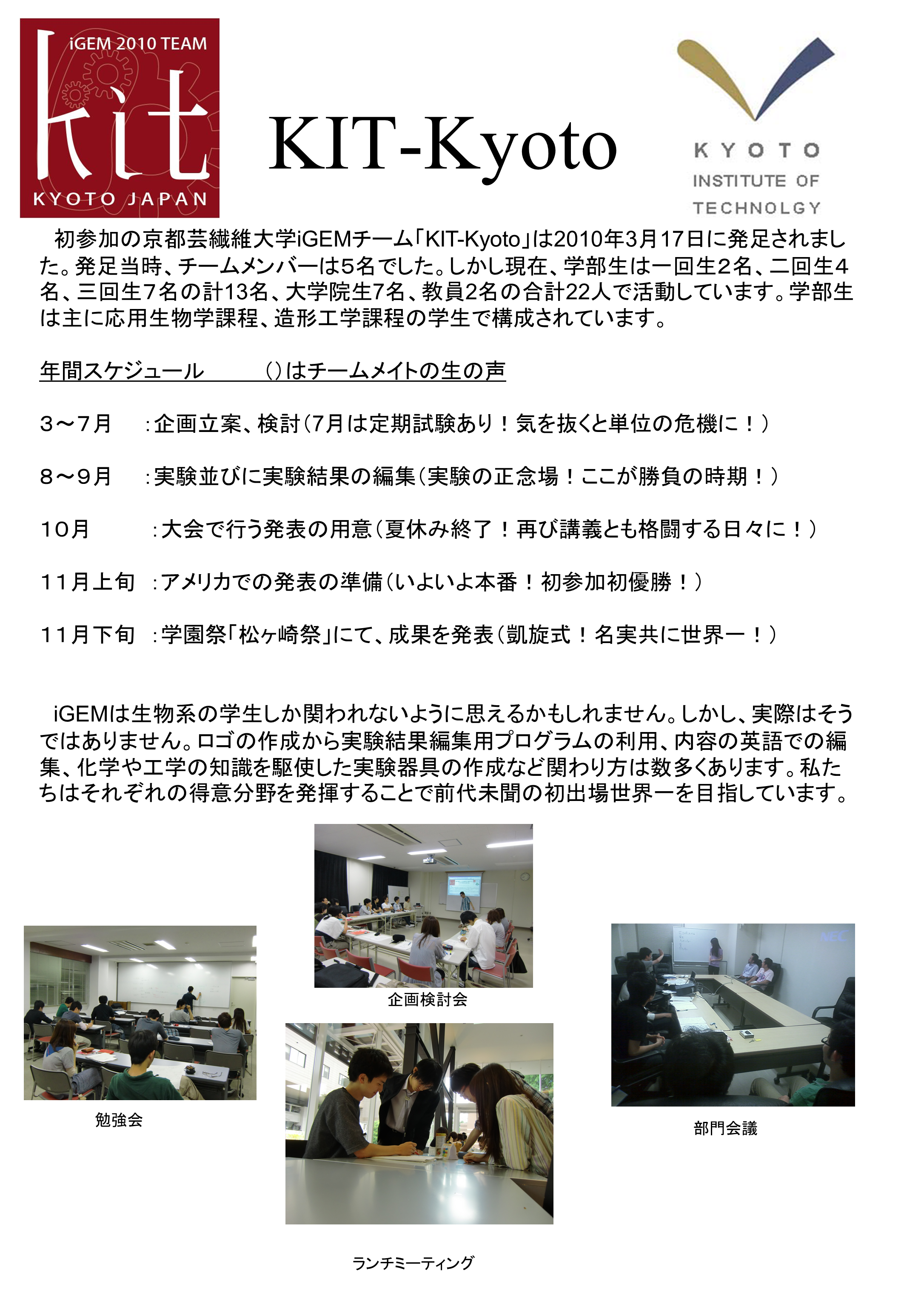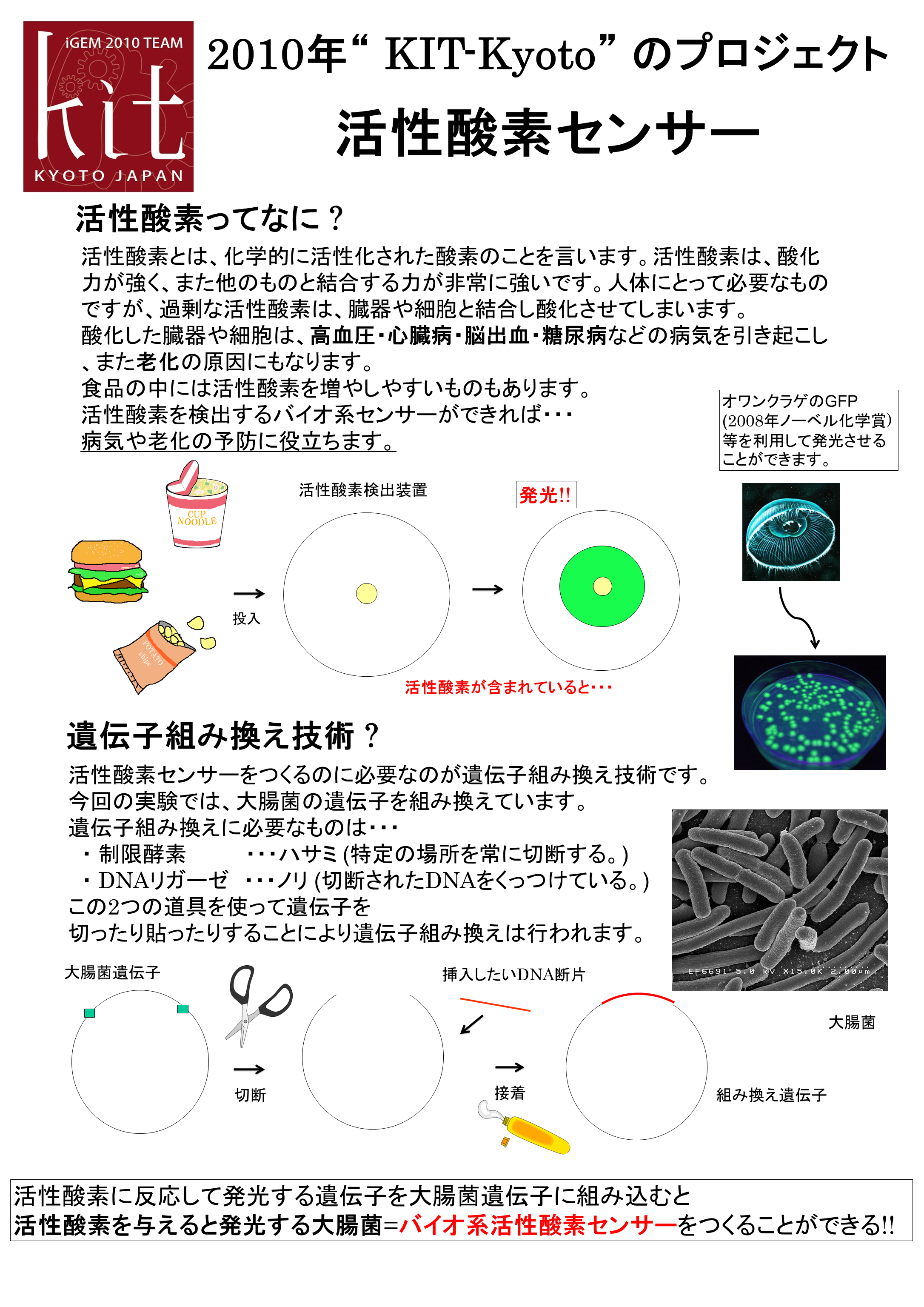Team:KIT-Kyoto/Project/HumanPractice
From 2010.igem.org
| Line 70: | Line 70: | ||
{| class="tblsample" style="color:black;background-color:transparent;" width="965px" align="center" | {| class="tblsample" style="color:black;background-color:transparent;" width="965px" align="center" | ||
|[[Team:KIT-Kyoto|Home]] > [[Team:KIT-Kyoto/Project/HumanPractice|Human Practice]] | |[[Team:KIT-Kyoto|Home]] > [[Team:KIT-Kyoto/Project/HumanPractice|Human Practice]] | ||
| - | |||
| - | |||
| - | |||
In our days, science alienation is still a big problem that transcends borders. Japan suffers of a similar alienation that poses a barrier towards further advancement of science and technology. In biology, genetic modification epitomizes the magnitude of this problem among people who regard synthetic technologies and sciences as “something strange”, or “something dangerous” in general.Whereas genetically modified foods are sold on the counter, consumers don&'t pick or choose food with labels. This results from the scarcity or lack of information on genetic modification on the part of the general public. Since a more rapid advancement of the field of life sciences is expected in the near future leading to more complicated technologies, information and communication will also become critical. Moreover, while we benefit from technology, his is increasingly becoming “a black box”. Unknown technology is not familiar any longer. | In our days, science alienation is still a big problem that transcends borders. Japan suffers of a similar alienation that poses a barrier towards further advancement of science and technology. In biology, genetic modification epitomizes the magnitude of this problem among people who regard synthetic technologies and sciences as “something strange”, or “something dangerous” in general.Whereas genetically modified foods are sold on the counter, consumers don&'t pick or choose food with labels. This results from the scarcity or lack of information on genetic modification on the part of the general public. Since a more rapid advancement of the field of life sciences is expected in the near future leading to more complicated technologies, information and communication will also become critical. Moreover, while we benefit from technology, his is increasingly becoming “a black box”. Unknown technology is not familiar any longer. | ||
Revision as of 09:20, 4 October 2010
 
|
| Home > Human Practice
In our days, science alienation is still a big problem that transcends borders. Japan suffers of a similar alienation that poses a barrier towards further advancement of science and technology. In biology, genetic modification epitomizes the magnitude of this problem among people who regard synthetic technologies and sciences as “something strange”, or “something dangerous” in general.Whereas genetically modified foods are sold on the counter, consumers don&'t pick or choose food with labels. This results from the scarcity or lack of information on genetic modification on the part of the general public. Since a more rapid advancement of the field of life sciences is expected in the near future leading to more complicated technologies, information and communication will also become critical. Moreover, while we benefit from technology, his is increasingly becoming “a black box”. Unknown technology is not familiar any longer. Accordingly, to let people in Japan and in the world know about more information of genetic modification, we tried activities below.
A briefing for high school students(i)At the open campus in August (2010/08/10)For high school students and their parents, we held a booth at KIT-Kyoto. In this booth, we introduced iGEM and our activities. To make the lecture simple, we tried to avoid using technical terms. Besides, we displayed model organisms genetically modified, for example, Yeast, Silkworm, Drosophila and E.Coli. Students could touch the silkworms and see Drosophila mutants, both organisms were genetically modified. We aimed to make their understanding clear, and make them have a feeling of familiarity for genetic modification. There were about 200 students who came to our booth. They told us that their ideas and conceptions about biology were broadened by looking closely at the model organisms.
(ii)At the open campus in OctoberWe held a booth for high school students and their parents. In addition to the August one, we displayed a specimen of our so called “E.Coli Pen”. Students could draw with this pen, and have a close contact with synthetic biology. Having them appreciate the subtle connection between art and science has been an enlightening feed-back for our group, since we have been able to observe and judge the aspects of human reaction towards the new and the unknown, when information is fully supplied about the particular phenomenon or technology. They have learned and enjoyed the harmony that can exist between Science and Art. iGEM Japan Survey
Tie-up with the other team
|
 "
"









